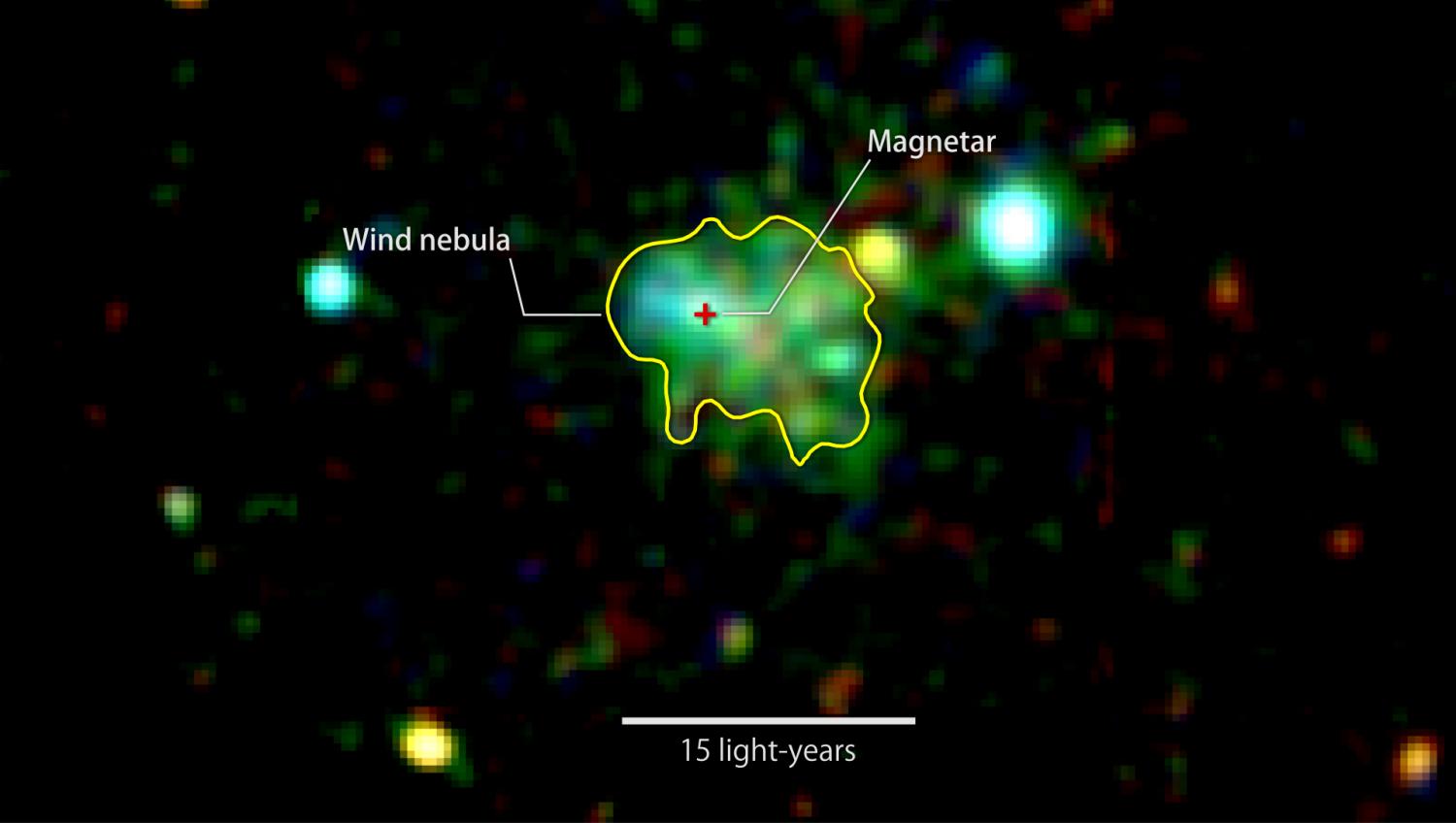
Credit: ESA/XMM-Newton/Younes et al. 2016
This X-ray image shows extended emission around a source known as Swift J1834.9-0846, a rare ultra-magnetic neutron star called a magnetar. The glow arises from a cloud of fast-moving particles produced by the neutron star and corralled around it. Color indicates X-ray energies, with 2,000-3,000 electron volts (eV) in red, 3,000-4,500 eV in green, and 5,000 to 10,000 eV in blue. The image combines observations by the European Space Agency’s XMM-Newton spacecraft taken on March 16 and Oct. 16, 2014
Magnetars are the strongest magnets in the universe. When a massive star runs out of fuels and collapses under its own gravity it eventually explodes as a supernova. The remnant is called neutron star. Neutron stars have a radius of a few kilometers, but their mass can be twice that of the Sun. The most commonly found neutron stars are pulsars. Their name originates from the pulses of emission that emit at various wavelengths from radio and visible light to X-rays and gamma rays. This emission is generated at various locations in their surrounding magnetic fields. These magnetic fields can be 100 billion to 10 trillion times stronger than Earth’s. But there are some neutron stars that have magnetic fields that are 1000 times stronger than that and these are called magnetars. 29 magnetars have been detected to date, but the exact physical mechanism(s) that creates them remains unknown.
Recently, astronomers, using NASA’s satellite, Swift, detected a nebula that surrounds a magnetar known as Swift J1834.9-0846. A month later the object was also observed using ESA’s XMM-Newton satellite. Scientists discovered that there is another unusual feature about this magnetar: a “wind nebula”, the first ever identified around a magnetar. Wind nebulae have been found in the past, with the most famous one to lie at the heart of the Crab Nebula in the constellation Taurus. In this case the wind nebula is powered by a pulsar’s fast rotation and strong magnetic fields that work together to accelerate electrons and other particles to velocities that are close to the speed of light. What generates the wind nebula in the case of a magnetar remains unknown, though.
Further observations could shed light on the mechanisms that produce these wind nebulae as well as to uncover the nature of magnetars.
Publication: Younes et al. 2016
Source: astronomy.com, phys.org
